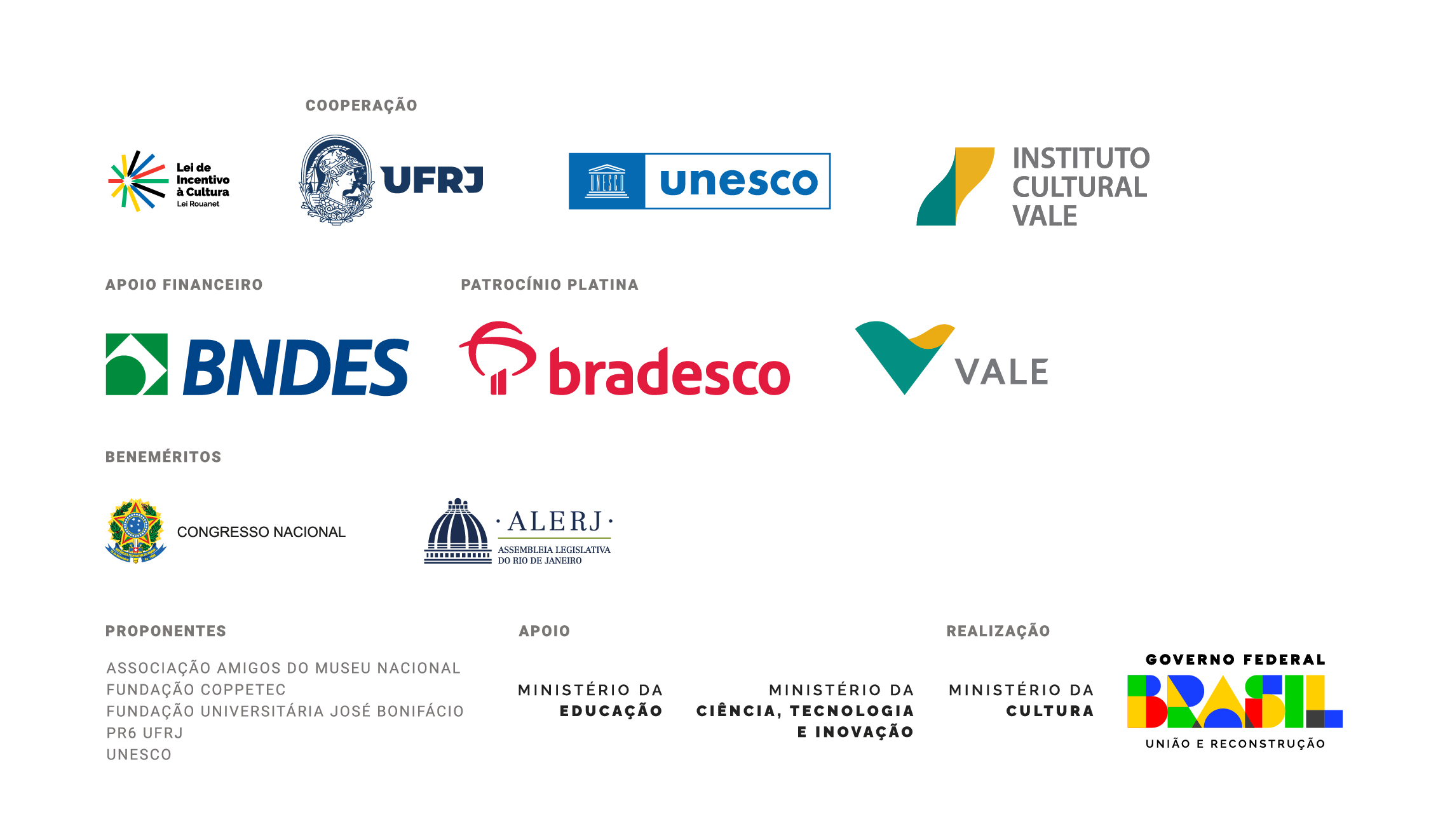Museu Nacional/UFRJ under reconstruction
Restoration work begins on Palace roof and facade
The Project Museu Nacional Vive – cooperation between UFRJ, UNESCO, and Instituto Cultural Vale, and sponsored by BNDES, Bradesco, and Vale – announces the beginning of the Palace São Cristovão, Museu Nacional/UFRJ, restoration work.
The Project is supported by the Education Ministry (MEC), Rio de Janeiro Federal and State Parliamentarians, and the Federal Government via Brazil’s culture stimulus law. Since 2020, the Project has been working on the reform and expansion of the Museum Central Library, on installing the New Research and Education Campus, and protecting the Palace’s historical and artistic decorative element and the Princesses Garden. Now, the work extends to the Palace itself.
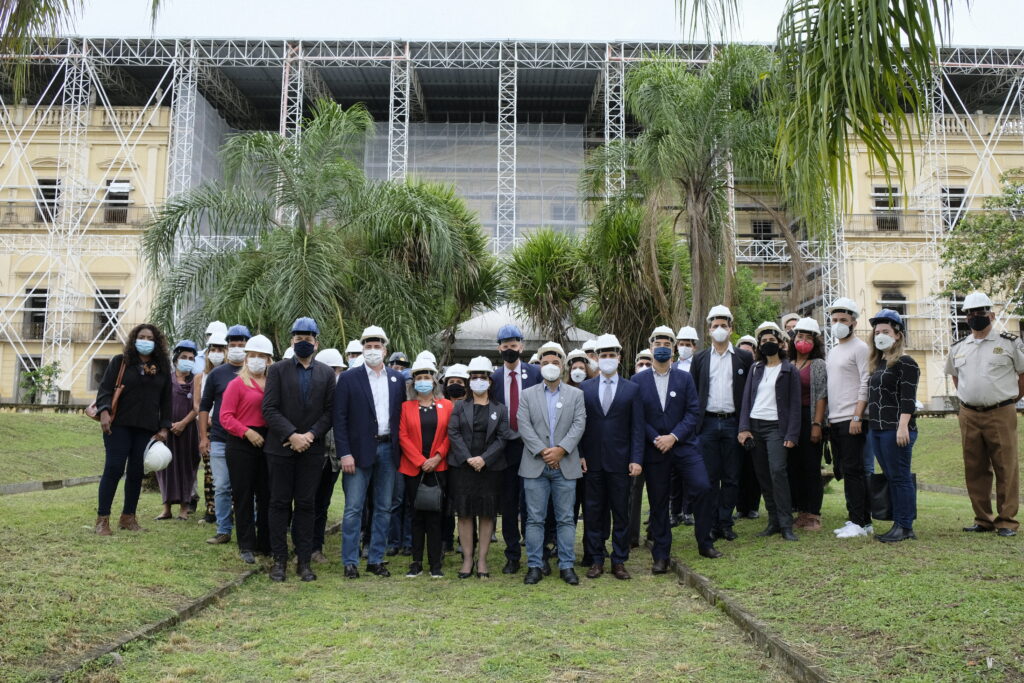
The restoration is planned in phases, starting with the historic facade and roof, which present architectural and decorative elements representative of the imperial period. There are scientific collections of great importance, such as the Bendegó, the biggest meteorite ever found in Brazil.
“At this historic moment, I thank the Museum’s direction and the Project Museu Nacional Vive’s Executive Committee for the non-stop work to make the restoration of this important heritage possible. Since the first days after the fire, the museum staff and the UFRJ technical team have been working with resilience and commitment. Today, it is the result of a strong governance structure that we have established with different partners and sponsors to make the dream of having the Paço Imperial of the Museu Nacional wholly restored and open to the public come true. I hope that new partners join the Project.” Says Denise Pires de Carvalho, Rector of UFRJ.
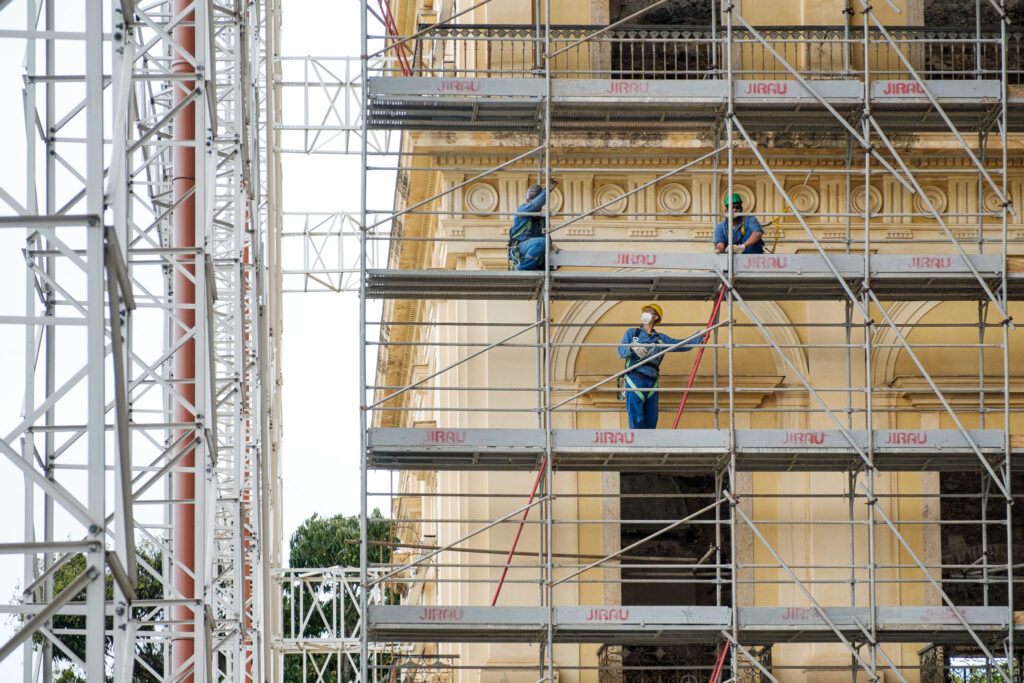
The work at the historical monument will solidify the stone masonries, the bricks, the windows, and the door gaps; it will restore the frames, fences, ironwork, replicas, and new doors, windows, and other items which are essential to the monument restoration. The Palace is a heritage protected by the Instituto do Patrimônio Histórico e Artístico Nacional (IPHAN).
The work on the Palace roof includes providing and installing metal scissors, a bracing structure, and a protection system against atmospheric discharges. Moreover, the rainwater descended will be reactivated, and it will be used as a reusable drained method. Besides that, the sculptures, which are on the top of the building, will be conserved and restored.
“The BNDES is fully committed to the Museu Nacional reconstruction, one of Brazil’s most important and symbolic heritage. We are helping in the studies to guarantee the Museum’s financial sustainability after its inauguration, including a patrimony fund. Initiatives like this one are part of the bank committed to the ASG plan, a plan which aims to preserve old generations’ legacy, promoting economic and social sustainable development,” states Petrônio Cançado, BNDES Credit to Infrastructure Director.
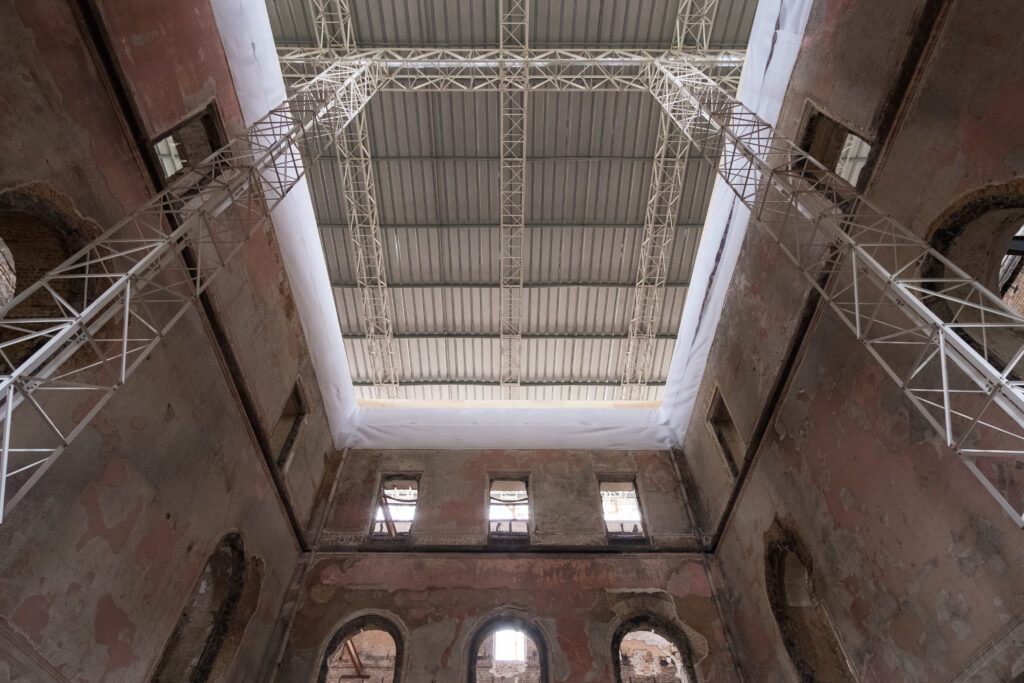
“It is great to see the Museu Nacional reconstruction development, which now gets to the roof and facade. It inspires us to keep going to watch the rebirth of this nineteenth-century historic building and be part of the journey to give the Museu Nacional back to society, alongside our partners. We are creating new paths to preserve Brazil’s cultural and historical heritage, and most importantly, we are creating opportunities for more people to access those heritages. Luiz Eduardo Osorio, Vale Vice-Executive President of Institutional Relations and Communication and Instituto Cultural Vale Board President. .
“Bradesco believes that culture is a transformative society agent. The bank supports art and sees it as a bridge between knowledge and social development. We strongly believe that the Project Museu Nacional Vive reflects the company’s value. The bank is immensely proud to be part of its reconstruction, helping to preserve Brazil’s history and therefore serving as the base to build our future,” states Bradesco Marketing Chief Nathalia Garcia.
Besides having consultants accompanying the Project architectural interventions, and restoration, who are specialized on heritage preservation, there is an Environmental and Risk Management, Preventative Conservation Work Group which gives technical guidance to the Project Museu Nacional Vive. The Work Group reunites some institutional specialist such as the Centro Internacional de Estudos para a Conservação e Restauro de Bens Culturais (ICCROM), Centro de Conservação e Restauração de Bens Culturais da Universidade Federal de Minas Gerais (CECOR), Arquivo Nacional e Fiocruz.
Marlova Noleto, Director and Representative of UNESCO Brasil, comments that “the beginning of the work on the building-monument is an important mark of the initiatives to recover the museological institution and give it back to the society. Every preliminary stage followed all the international conservation standards, from the emergency work to protecting the walls and installing a temporary roof to rescue the collections and protection of the decorative elements that survived the fire. “We will keep following all the standards. Every restoration work will be submitted to the IPHAN approval, aiming to preserve the Palace identity and architectural history,” adds the director.
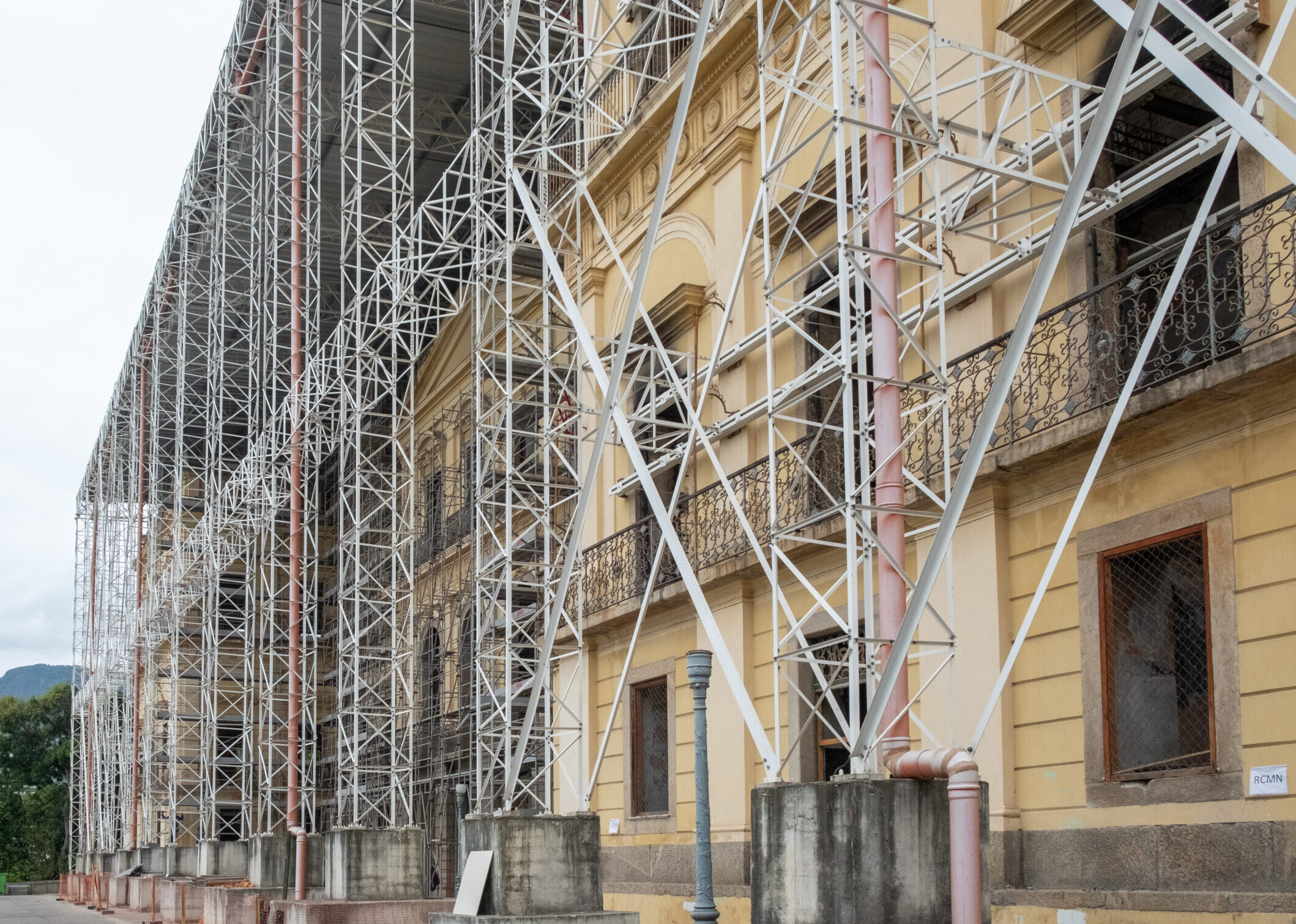
MANAGEMENT AND GOVERNANCE
Concrejato Engenharia will execute the work estimated at R$ 23.6 million. Forty years working in Brazil, Concrejato is known for restoring historical monuments, for example, the National Library, Gustavo Capanema Palace, São Paulo Sé Cathedral, Cine Palácio, Mário de Andrade Library, São Bento Monastery, among others.
“The Associação Amigos dos Museu Nacional (SAMN) coordinated the selection process and now administrates the work, respecting its mission to support the Museum’s life exclusively. Since the Palace fire, SAMN had to intensify its work, managing a significant amount of reconstruction and reconstitution. We are aligned with the Museum’s direction, UFRJ, and multiple partners, especially those of the Project Museu Nacional Vive, Luiz Fernando Dias Duarte, President of SAMN.
TRANSPARENCY AND PARTICIPATION
The beginning of the Palace São Cristovão work boosts the Museum strategy concerning transparency and social engagement. Members of the society can monitor the work on the Project website and check reports on the SAMN website. People is also invited to interact with the institution through videos, social media, and the program ‘Canteiro Aberto’,whichwill promote activities related to preservation during 2022.
“This is a wonderful day for our institution and all Brazilian society. We are extremely proud to start the work which will give back the first Brazil museum, as soon as possible. We trust that the work will be conducted articulated alongside the architecture, restoration, landscape, and museography works; and supported nationally and internationally. Although we have been facing difficult times, this is a date we all should celebrate, especially those who work with science and culture in Brazil,” highlights Alexander Kellner, Director of Museu Nacional/UFRJ.




